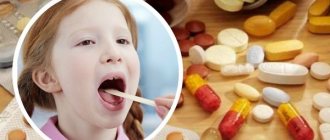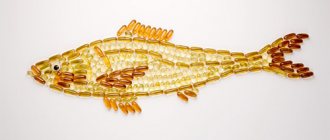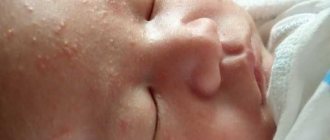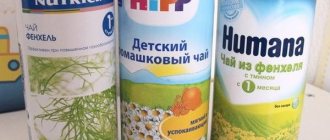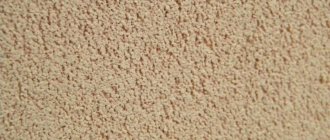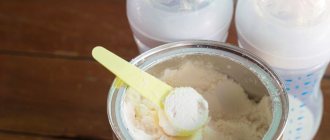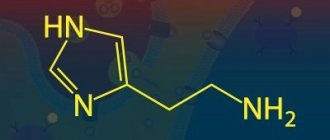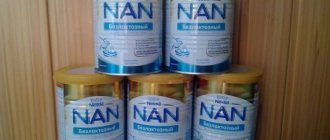Indications for use
Troychatka is a medicine consisting of a combination of three drugs - an antispasmodic, an antipyretic and an antihistamine. The composition may be different, but the most common is the combination of medications No-shpa, Analgin and Diphenhydramine.
The main indication for the use of the lytic mixture (triad) is intense fever. When a child's temperature is above 38˚C, there is a risk of vascular spasm, which leads to seizures. Antipyretic drugs do not always help, so it is better to use triad as an emergency method. This product is allowed for children from six months of age as prescribed by a doctor.
Contraindications to the use of lytic mixture
The combination of drugs is very serious, but there is a limited list for taking. These are sensitivity to components, impaired hematopoietic function, blood diseases, liver disease, kidney disease, bronchospasm, negative reaction to medications, paroxysmal abdominal pain. The risk of contraindications is higher for the injection form, so only a doctor should give the injection.
During pregnancy and lactation, triad is contraindicated due to the analgesic. If necessary, the drug is replaced from available non-steroidal drugs only as prescribed by a specialist. You should be wary of an overdose, so if you have recently used at least one component of the triad, this drug should not be prescribed.
Medicines included in the triad
The troika for fever for children may have a different composition, but it should always be 3 drugs with multi-functional effects:
- The antipyretic component is selected depending on the age of the patient. For children, Nurofen or Ibufen is most often used, for adults - Paracetamol, Analgin, Aspirin or Nimesulide. Paracetamol also quickly has an antipyretic effect and at the same time relieves pain and improves general condition. Children can take it almost from birth, but it belongs to the pharmacological group of non-steroidal anti-inflammatory drugs and has many side effects.
- An antispasmodic drug is necessary to prevent seizures and vasospasm. The most common drug in this category is No-spa; it is most often used to eliminate spasms in children. You can also use Nicotinic acid, Nikoshpan (contraindicated for children), Drotaverine.
- A lytic mixture for fever for children must include an antihistamine component. This is a medicine that prevents the development of an allergic reaction. Often the body reacts to heat with a rash or swelling, so it is important to prevent these phenomena. In addition, when an illness occurs, the patient is prescribed many medications to which there may be an allergic reaction, so an antihistamine is necessary. Children are often prescribed Diazolin, Suprastin at high temperatures, and sometimes Diphenhydramine. For adults, the same drugs or Tavegil, Pipolfen.
The composition of the triad makes it possible to provide a quick comprehensive effect in case of fever and high body temperature. All these drugs in combination do not form a new medicine - they enhance the effect of each other, due to which they quickly relieve fever and pain.
All non-steroidal drugs have side effects, some of them are associated with disruption of the gastrointestinal tract, therefore, if possible, it is recommended to avoid taking Paracetamol or Aspirin (acetylsalicylic acid).
Compound
A potent lytic drug in injections is usually used by emergency doctors when they need to quickly “bring down” a fever that is too high. The classic composition of this complex drug consists of three main components. Each of them alleviates the patient's condition.
Composition of the lytic mixture:
- Analgin.
His share is 50% of the rest. It is an antipyretic analgesic.
- Diphenhydramine.
Enhances the activity of Analgin. His share is 1% of the rest. This is an antihistamine that relieves allergic reactions. Additionally, it has a sedative effect. Can be replaced with Suprastin or Tavegil.
- Papaverine.
Antispasmodic, dilates blood vessels. Belongs to the group of opium alkaloids. Increases heat transfer, reduces the risk of seizures. Its part is only 0.1% of the total composition. Can be replaced with No-shpa.
How to replace this or that drug
The following medications can be used as an antipyretic component:
- Paracetamol is a medicine from the anilide group. It contains the substance of the same name, paracetamol, which has antipyretic properties. Used for migraines, fevers, severe inflammatory processes.
- Analgin is prazolon from the NSAID group. The main active ingredient is metamizole sodium. It inhibits the synthesis of prostaglandins, relieves fever and relieves pain.
- Baralgin is an analogue of Analgin, a drug with the same substance and pharmacological action.
- Aspirin is a drug from the group of non-steroidal anti-inflammatory drugs. The main substance in the composition is acetylsalicylic acid, which has a strong analgesic and anti-inflammatory effect.
The antispasmodic component can be represented by the following drugs:
- No-Shpa is an antispasmodic drug based on drotaverine. Reduces smooth muscle activity and prevents seizures.
- Drotaverine is a vasodilator and antispasmodic agent.
- Papaverine is an antispasmodic based on papaverine, reduces smooth muscle tone.
Possible antihistamine components:
- Suprastin. Belongs to the group of antiallergic drugs. The main component is chloropyramine, which has an antihistamine effect.
- Diphenhydramine with diphenhydramine has an antiallergic, hypnotic, and mild analgesic effect. In large quantities it has a sedative effect, so it must be used with caution, and it is also important to strictly adhere to the prescribed dosage.
- Tavegil is an antihistamine based on clemastine. Has antipruritic and antiallergic effects.
The most common combinations:
- Analgin + No-Spa + Diphenhydramine;
- Aspirin + Diphenhydramine + No-spa.
The combination will be determined by doctors depending on the patient’s age, temperature and general condition. Troychatka for fever, the composition of which is also selected individually for children, relieves fever more effectively than other drugs, so it is often used only once as an emergency aid.
Acceptable dosages when taking
The amount of active substance per dose depends on the manufacturer. You need to carefully read the instructions for each specific medicine.
Paracetamol
Pediatricians recommend a dosage of 15 mg per kilogram. The daily dose of paracetamol should not exceed 90 mg per kilogram. Syrups, suspensions, effervescent tablets, and suppositories are produced for children. A decrease in temperature occurs after 30-60 minutes and lasts up to 4 hours. Paracetamol in suppositories acts more slowly, but their effect lasts longer.
Important! Babies up to three months of age can be given a maximum of 2 doses of paracetamol per day.
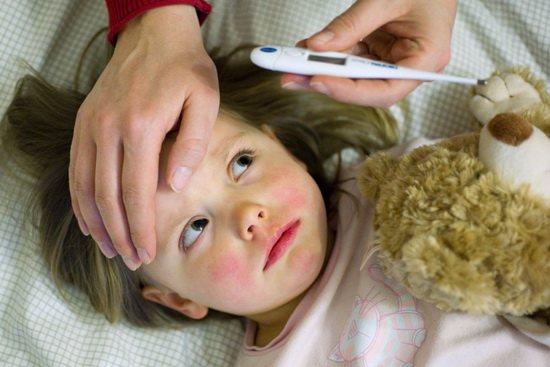
Analgin
Dosage in young children is calculated by weight. It is necessary to multiply the child’s weight by 5-10 mg of the drug. The final figure is the daily dose of the drug, which should be taken in 2-3 doses.
On a note! In many developed countries, analgin is strictly limited for use in pediatrics. It is used only in emergency situations, in the form of injections.
Suprastin
The maximum daily dose of suprastin is based on a calculation of 2 mg per kilogram of weight.
Directions for use, special instructions
Doctors usually inject the lytic mixture. It is imperative to tell them what antipyretic drugs the child took over the past 24 hours, because At least 6-8 hours should pass between doses of the same medications. For example, if a child was previously given Paracetamol, then it is prohibited to include it in the triad.
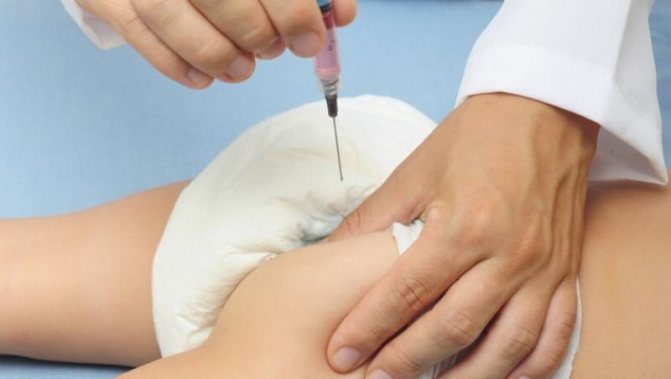
Injections are made intramuscularly in compliance with the following rules:
- You definitely need a syringe for one-time use, the syringe should not have expired, it should be in intact, sterile packaging;
- all three ampoules must be warmed in your hand so that the temperature of the drugs reaches body temperature;
- You need to take medications in a clear sequence: first an antipyretic, then an antispasmodic, and lastly an antihistamine;
- The injection is painful, so you need to administer the medicine slowly.
Dosage of lytic mixture for children with fever
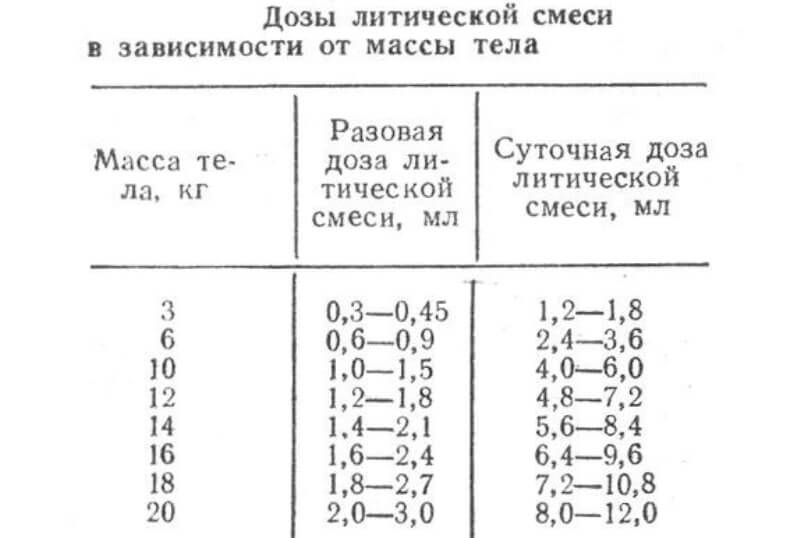
Troychatka for fever should be given carefully, because the drugs, in addition to their benefits, can cause harm.
In ampoules
A troika injection for fever works much faster than pills, because the medicines immediately enter the bloodstream and begin to act. In addition, at high temperatures, vasospasm is possible, in which a tablet from the stomach (or a rectal suppository from the rectum) may not be immediately absorbed.
The dosage of triad is determined individually depending on the age and weight of the child. For patients up to 12 months, the dose is calculated by weight, and after - by age:
- Analgin or other means to reduce fever should be dosed at the rate of 0.2 ml for every 10 kg of the patient’s weight.
- Antihistamine (Suprastin or Diphenhydramine) - 0.1 ml for each year of the child’s life.
- Antispasmodic - 0.1 ml for each year of life.
For example, if a child is 4 years old and weighs 20 kg, then 0.4 ml of Analgin, 0.4 ml of Suprastin and 0.4 ml of No-shpa will be required.
In tablets
In the form of tablets, a lytic mixture for children is prescribed if there is no vasospasm, otherwise there is a risk that the drugs may not be absorbed. For young children, 3 tablets are crushed into powder and given with plenty of water. The tablets begin to act after 30-50 minutes. The child will feel a little better and will fall asleep.
The dosage in tablets is calculated depending on the age of the patient. Children under 5 years of age are prescribed ¼ tablet, regardless of the composition of the lytic mixture. It is best to use Paracetamol, Analgin and No-shpu, because this combination is considered classic and harmless. If these drugs are not available or cannot be taken for some reason, then the composition of the triad may include Baralgin, Suprastin, Papaverine.
How to properly prepare lytic mixture for children
High temperatures are very dangerous for babies. If it is not lowered in time, the child sometimes experiences febrile convulsions. When the baby's condition is critical, it is recommended to call an ambulance. When parents do not have such an opportunity, they give him a lytic mixture.
- 1 What is a lytic mixture?
- 2 Indications for use
- 3 Composition
- 4 Injections
- 5 Tablets
- 6 Table of application of lytic mixture
- 7 Interaction with other means
- 8 Side effects and contraindications
- 9 Doctor Komarovsky about the lytic mixture
- 10 Frequently asked questions
What is a lytic mixture?
Several medications are mixed into one mixture or solution to instantly lower a high temperature. This composition has a name - lytic mixture for children.
It is used when you need to “bring down” a fever. An antipyretic should not be given to a baby if his temperature is 38˚C. This indicator indicates an adequate response of the body to a viral attack.
Indications for use
A lytic mixture for fever for children is used to quickly alleviate the serious condition of the patient. It is used when the fever is more than 38˚C, and all other antipyretics have not given the expected result.
A lytic mixture is given to children if fever provokes seizures. Parents should carefully examine the condition of their sick child. If he has a fever, and his legs and arms are cold and his skin is too pale, he must be given medicine immediately.
Compound
A potent lytic drug in injections is usually used by emergency doctors when they need to quickly “bring down” a fever that is too high. The classic composition of this complex drug consists of three main components. Each of them alleviates the patient's condition.
Composition of the lytic mixture:
His share is 50% of the rest. It is an antipyretic analgesic.
Enhances the activity of Analgin. His share is 1% of the rest. This is an antihistamine that relieves allergic reactions. Additionally, it has a sedative effect. Can be replaced with Suprastin or Tavegil.
Antispasmodic, dilates blood vessels. Belongs to the group of opium alkaloids. Increases heat transfer, reduces the risk of seizures. Its part is only 0.1% of the total composition. Can be replaced with No-shpa.
Important! When combined together in one mixture, these drugs do not form any new composition. They just enhance each other's effect. All the ingredients of a lytic remedy do not cure any disease. They only jointly relieve the acute symptoms of the inflammatory process, that is, they quickly “bring down” the fever.
Injections
Injections that include two or three medications at once are given to children over three years of age no more than once every 6 hours, and for children under three years of age - once every 24 hours. They are used if antipyretic syrups and suppositories do not help the baby. Intramuscular injection. Improvement occurs after 10 minutes.
Analgin with Diphenhydramine
Children under 1.5 years old are often given injections of two medications when they have a fever - Analgin and Diphenhydramine. Together, these drugs have a rapid fever-reducing effect.
Composition of infant formula (up to 1.5 years):
- Analgin: 10 mg multiplied by weight in kg.
- Diphenhydramine: 0.1 ml.
It’s easy to give an injection: you need to take a 2 ml or 5 ml syringe and draw the required amount of medicine from the ampoules. The injection is given in the upper outer quadrant of the buttock. The needle enters the muscle perpendicularly. The medicine is administered smoothly and very slowly.
Troychatka – Analgin, Diphenhydramine, Papaverine
The triad is prepared from three medications. For babies up to 12 months and children after one year, the composition of this mixture is slightly different. With age, the amount of active substances increases.
Troychatka for children up to 12 months:
- Analgin (50%): 10 mg multiplied by the baby's weight.
- Diphenhydramine (2%): 0.1 ml.
- Papaverine (2%): 0.1 ml.
How many ml of each drug is taken for formula for children after 1 year:
- Analgin (50% solution of Metamizole sodium): 0.1 ml multiplied by age.
- Diphenhydramine (2%): 0.1 ml multiplied by age.
- Papaverine (2%): 0.1 ml multiplied by age.
Important! The medicinal mixture should not be prepared by eye. You need to keep the proportions exactly. For children under one year of age, the dose is calculated based on body weight, and after one year - based on the number of full years lived.
Analgin, Paracetamol, Suprastin (Tavegil, Fenistil)
Troychatka is also prepared with Suprastin or Tavegil. These drugs have an antiallergic effect. They are used to reduce the level of toxicity during the inflammatory process.
Recipe for preparing the mixture:
- Analgin: 0.1 ml multiply the number of full years.
- Paracetamol: 0.1 ml multiplied by the number of completed years.
- Suprastin: 0.1 ml multiply the number of full years.
Before injecting the ampoule, you need to hold it in your hand for some time to warm it up. The administered medicine must be at body temperature. The syringe is used only for disposable use. Does not apply again. All components of the mixture are mixed in one syringe.
Analgin, Diphenhydramine, No-spa
Instead of Papaverine, it is allowed to take No-shpa. This drug also exhibits antispasmodic and vasodilator activity.
Lytic mixture - dosage calculation for children:
- Analgin: 0.1 ml times age.
- Diphenhydramine: 0.1 ml times age.
- No-spa: 0.1 ml times age.
Important! The lytic mixture for fever is a very powerful remedy for lightning-fast fever relief. It may cause an allergic reaction. They first check how the body will react to the product: a couple of drops of the mixture are applied to the skin of the face. If no redness or irritation appears, the injection can be given.
It is not recommended for a non-specialist to give injections on their own at home. It is better to call an ambulance at home. Before the doctor arrives, the child can be given plenty of fluids.
Pills
The lytic remedy for fever does not have to be given as an injection. If the child is conscious and not vomiting, he is allowed to be given pills. They should first be crushed into powder. Take this product with water.
True, improvement in the condition will occur only after 30 minutes. The patient's fever will subside, he will sweat a lot and want to sleep. Be sure to change wet clothes and change your baby into dry pajamas.
Analgin, Paracetamol, Suprastin
A child over three years old can be given a mixture of tablets. The product must first be prepared, that is, the tablets must be crushed into powder.
Lytic mixture for children in tablets (from the whole part):
- Analgin: ¼.
- Paracetamol: ¼.
- Suprastin: ¼.
The powder is poured into a spoon and mixed with a small amount of boiled water. The medicinal mixture is washed down with warm tea or compote.
Analgin, Paracetamol, No-spa
If you don’t have Papaverine in your home medicine cabinet, you can replace it with No-shpa. The dosage of drugs of the same type is not changed.
Lytic mixture for children - dosage of the drug in tablets (from the whole part):
- Analgin: ¼.
- Paracetamol: ¼.
- No-shpa: ¼.
Analgin should be used carefully to relieve fever. This remedy may irritate the stomach lining and lead to severe abdominal pain and diarrhea.
Baralgin, Papaverine, Suprastin
The dosage of the drug is prescribed by the doctor based on the severity of the disease and the age of the baby. You can give children only minimal doses of the drug on your own. For example: an adult is given one whole tablet of each remedy for fever at one time.
Lytic mixture for children - composition (from the whole part):
- Baralgin: ¼.
- Papaverine: ¼.
- Suprastin: ¼.
Before using crushed tablets, it is recommended to consult a doctor. Exceeding the dosage is not allowed. After 6 hours, if the fever does not subside, you can take the drug again in the same proportions.
Lytic mixture application table
Table of the maximum dose of the lytic mixture:
| Weight, kg | 3 | 6 | 10 | 12 | 14 | 16 | 18 | 20 |
| Single dose, ml | 0,3 – 0,45 | 0,6 – 0,9 | 1,0 – 1,5 | 1,2 – 1,8 | 1,4 – 2,1 | 1,6 – 2,4 | 1,8 – 2,7 | 2,0 – 3,0 |
| Daily dose, ml | 1,2 – 1,8 | 2,4 – 3,6 | 4,0 – 6,0 | 4,8 – 7,2 | 5,6 – 8,4 | 6,4 – 9,6 | 7,2 – 10,8 | 8,0 – 12,0 |
Interaction with other tools
Sometimes Novocain is added to the lytic mixture along with Analgin and Diphenhydramine. This drug has an analgesic effect and reduces the intensity of the inflammatory process. Novocaine often causes an allergic reaction. It should not be prescribed as an antipyretic to children.
The lytic mixture is not prescribed if Diphenhydramine or Analgin has already been used as independent drugs. Taking a double dose of the same medicine may cause unwanted complications.
Side effects and contraindications
Using medications without the permission of your pediatrician can lead to side complications. And nalgin sometimes leads to the development of acute gastritis, which is accompanied by stomach pain and diarrhea. Sometimes medications cause a child to develop a skin rash, vomiting, and convulsions.
If you are allergic to the active components of one of the drugs, you should stop using the entire composition.
The lytic mixture cannot be used in the following cases:
- for acute abdominal pain, if there is a possibility of appendicitis;
- if you are allergic to the components of the mixture;
- children under 6 months;
- 3 hours after taking medications containing Analgin.
In case of an overdose, the child may experience vomiting, a sharp drop in temperature, and difficulty breathing. In this case, the use of medications should be stopped. The child's stomach is washed and given a large amount of liquid to drink. Be sure to give a sorbent (activated carbon or smecta).
If convulsions occur, you should call an ambulance.
Dr. Komarovsky about the lytic mixture
Dr. Komarovsky believes that it is better to reduce fever with injections. At high temperatures, the body suffers from a lack of fluid. Blood supply is concentrated only in vital organs. Absorption of antipyretics through the intestines slows down.
- During a fever, your baby needs to be given water often.
- The air in the room should be cool.
- Do not tightly wrap a child with a high temperature.
- Clothes should be loose.
- If the baby is sweating, the clothes need to be changed to dry ones.
FAQ
How long does it take for the lytic mixture to work?
The injection usually takes effect within 10 minutes. The fever disappears, the temperature drops to 37˚C. The child’s arms and legs become warmer. The effect of the antipyretic drug lasts for 4 – 6 hours. If after some time the temperature rises again, the baby must be urgently hospitalized in the hospital.
How to store the mixture?
It is recommended to store the injections or tablets from which the mixture is prepared out of the reach of children. Preferably in a dry place at room temperature. The entire dose of medication is not prepared in advance. Each ampoule is opened only before the injection itself.
Unused product can be stored in a cool place for 6 hours. If the fever goes away, open ampoules are thrown away.
The same goes for tablets: unused shares can only be stored for 24 hours. If there is no need to re-give the product, they are thrown away.
Is the drug dangerous for children?
The drug is not dangerous if it is not used frequently, but only in critical cases and as prescribed by a doctor. The drug cannot be used every time the temperature rises. A lytic remedy is given to a child only when all other antipyretics have not produced any results and there is an urgent need to “bring down” the fever.
Source: https://kinders.online/bd/detlekarstva/liticheskaya-smes.html
Contraindications
Triplet can not always be used by children and adults at high temperatures. Before taking 3 tablets or making an antipyretic injection, you need to familiarize yourself with possible contraindications to avoid unwanted reactions.
Contraindications to the use of triad:
- individual intolerance to the components that are included in the lytic mixture;
- use of drugs of similar effect less than 6 hours before using triad;
- taking Analgin or Diphenhydramine;
- chronic diseases of the gastrointestinal tract.
During the period of bearing a child, triads are allowed only if the expected benefit outweighs the possible harm. During lactation, it is recommended to stop breastfeeding for the duration of treatment. In addition to the lytic, it is not advisable to feed the baby milk from a mother who has a fever, fever, or fever, because pathogens can be transmitted through the milk.
What is a lytic mixture?
To prepare a lytic mixture to effectively bring down the temperature, the following three components are used, which can provide the desired medicinal benefits:
- Analgin, which is an effective antipyretic that can relieve pain and malaise in a child caused by fever. If desired, you can replace analgin with paracetamol or ibuprofen-based medications.
- Antihistamines. Suprastin or Diphenhydramine are most often used.
- No-spa acts as the main antispasmodic, which relieves spasms and improves the general health of the child.
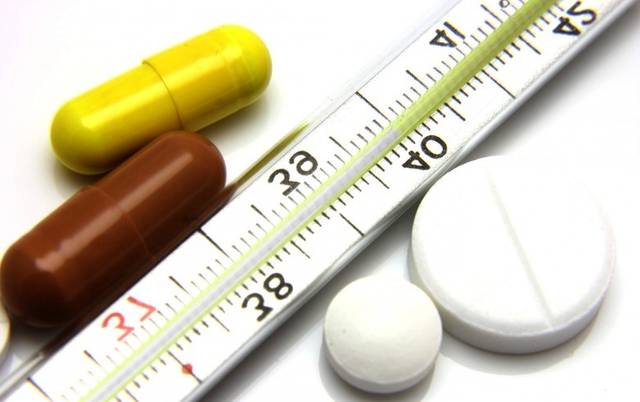
You can use medications in the form of tablets, but if taking medications in this form is difficult for a child, then injections are suitable, since they are more targeted and effective. The combination of such drugs allows you to bring down the fever without aggressive effects on the child’s body. But the lytic mixture is an extreme option, which occurs only if it is necessary to eliminate the inflammatory process in the body.
Overdose and side effects
In some cases, a child should not be given triplet for fever, because the drugs can cause side effects:
- decreased blood pressure (due to the fact that non-steroidal anti-inflammatory drugs, for example Acetylsalicylic acid, Analgin, Paracetamol, thin the blood);
- dry mouth, constant desire to drink caused by dehydration;
- an allergic reaction that manifests itself as redness, rash and itching of the skin, swelling of the extremities, and Quincke's edema.
In case of overdose, heartburn, nausea, vomiting, and possible diarrhea occur. Often, patients who do not comply with the dosage when using Suprastin, Diazolin at high temperatures along with Drotaverine (Diphenhydramine) experience a disturbance in heart rate (tachycardia, arrhythmia), and increased blood pressure.
If, after taking a triple combination of drugs, a child develops similar symptoms, you need to immediately call an ambulance, and at this time wash the stomach yourself (if you took the tablet form) and give sorbents, for example Activated carbon, Enterosgel or Atoxil

